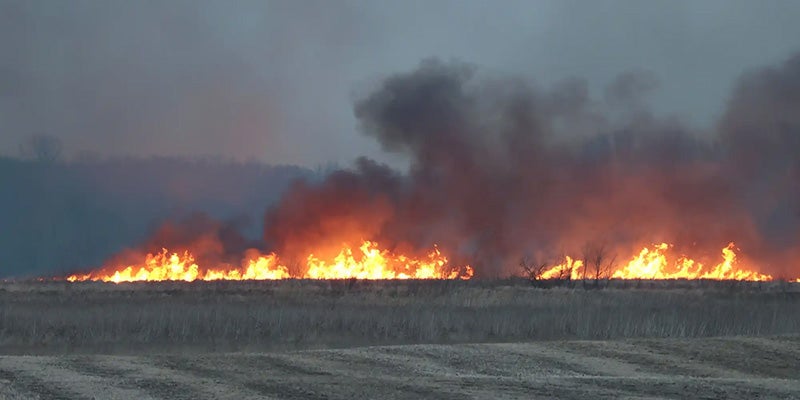Wildfires burn hundreds of acres in southern, western Minnesota
Published 9:54 am Monday, March 4, 2024

- Flames are visible and plumes of dark smoke rise into the sky as a wildfire burns a few miles east of Waseca on Sunday Andrew Krueger/ MPR News
|
Getting your Trinity Audio player ready...
|
By Cari Spencer and Nicole Ki
Wildfires in southern and western Minnesota burned hundreds of acres on Sunday amid warm weather, gusty winds and low humidity.
A wildfire ignited north of Waseca around noon Sunday, swelling to more than 500 acres by late afternoon as it spread across fields and wetlands, according to the Minnesota Department of Natural Resources.
KARE 11, citing officials in Waseca County, reported the fire was under control Sunday night after burning an estimated 1,000 acres. There were no immediate reports of injuries or structures damaged. More information is expected on Monday.
Meanwhile, in western Minnesota, the Fergus Falls Fire Department reported that a fast-moving wildfire in Western Township, southwest of Fergus Falls, burned more than 1,000 acres on Sunday. Officials said it was contained as of Sunday night, with Minnesota DNR and U.S. Fish and Wildlife Service crews monitoring areas that were still smoldering.
Waseca wildfire
In southern Minnesota, 12 fire departments responded to the fire near Waseca, with support from both the DNR and U.S. Fish and Wildlife Service. Two aerial planes were dispatched to lay down fire retardant, said Leanne Langeberg, a public information officer with the Minnesota Interagency Fire Center. A helicopter also responded.
According to a dispatcher at the Waseca County Sheriff’s Office, as of late Sunday afternoon, a few houses were evacuated, but no houses were impacted by the fire.
The fire started as a small brush fire, growing amid ideal fire conditions. Sunday’s weather conditions prompted officials to issue the first red flag warning of the year in Minnesota, signaling ideal conditions for flames to easily spread quickly out of control.
Langeberg said the season’s first red flag warning usually is not issued until a few weeks into March, but the lack of snow cover this winter spurred an earlier warning.
“If we continue on the drier pattern, we’re likely to have a more active spring wildfire season this year,” said Langeberg. “What we’re seeing this time of year is a lot of the grasses that were left over from last year are now once again exposed and they’ve had the whole winter to dry out in here. And when you get a heat source that touches down on those grasses, a fire can ignite.”
The Minnesota Pollution Control Agency issued an advisory Sunday, saying the wildfire could affect air quality along the Interstate 35 corridor as far north as the Twin Cities. Shifting winds later pushed the smoke to the east.





